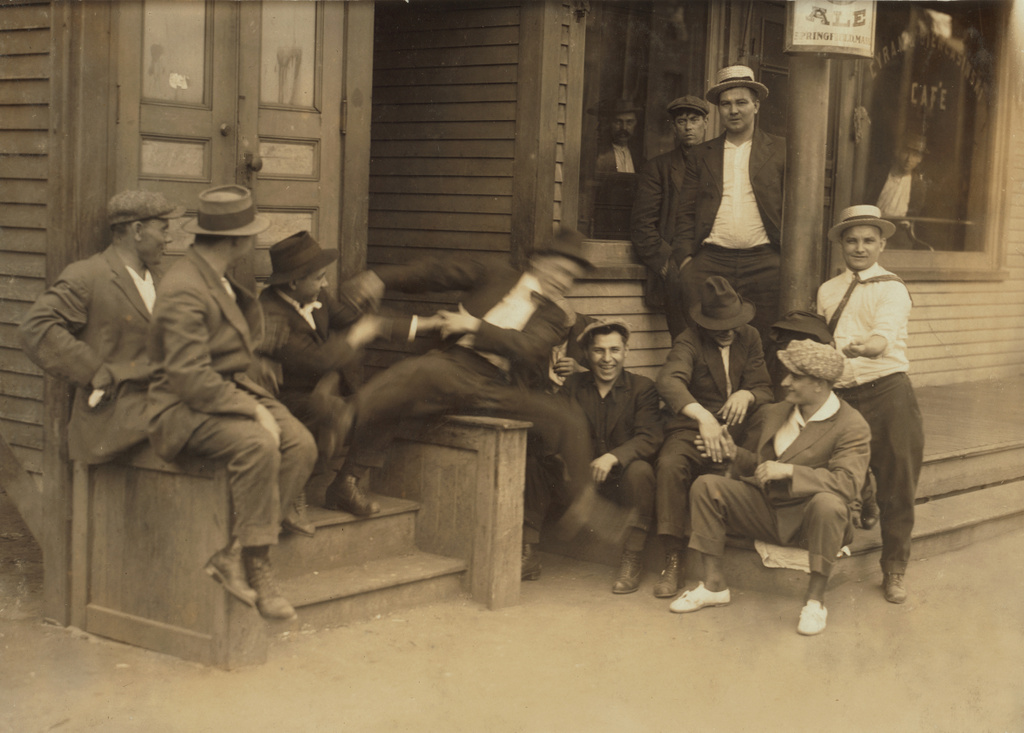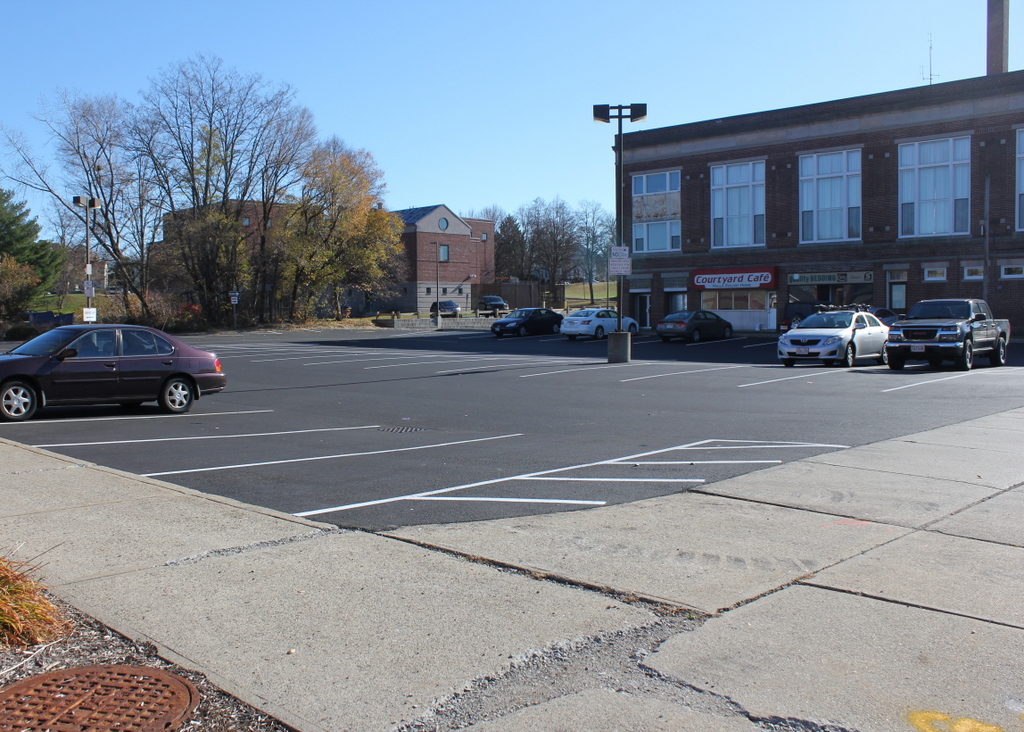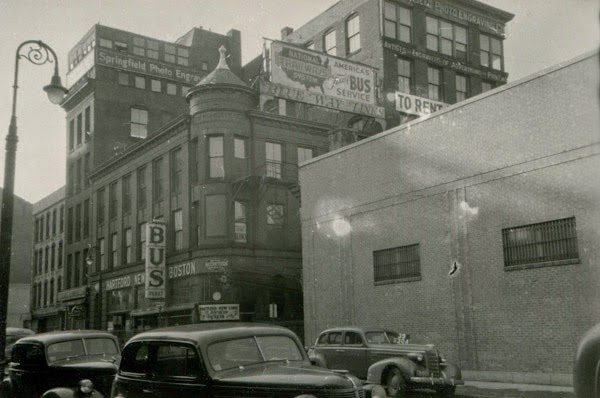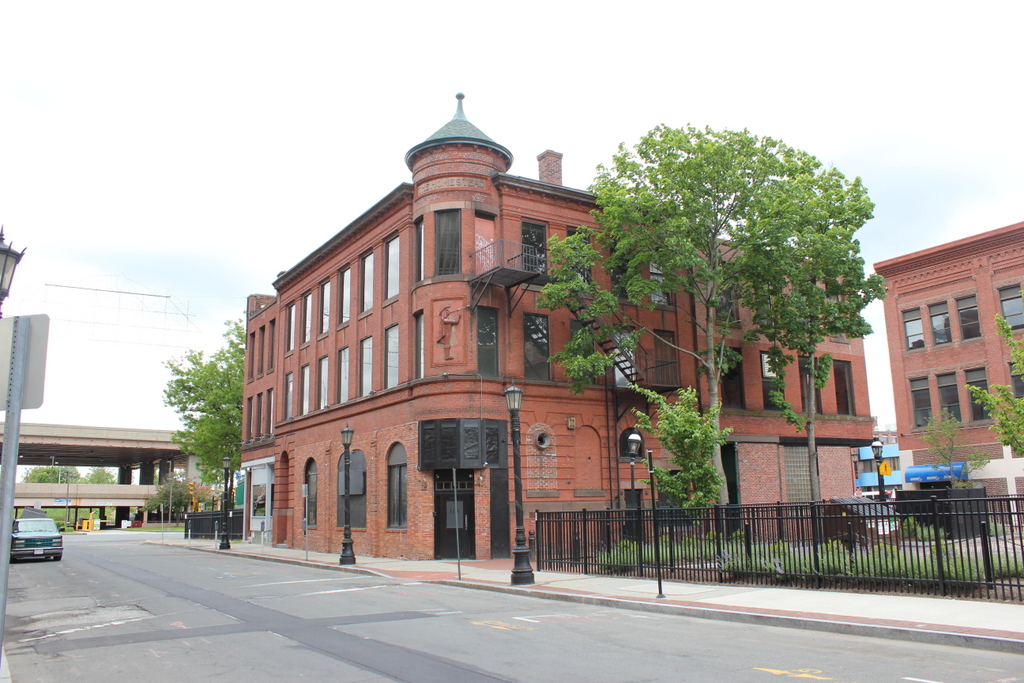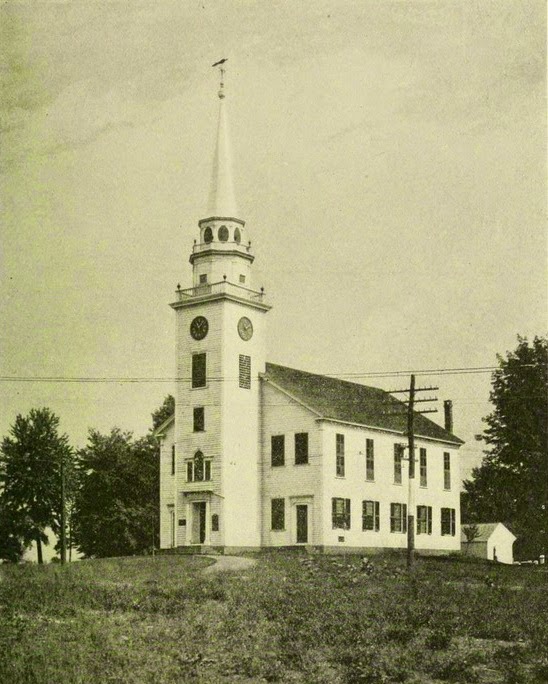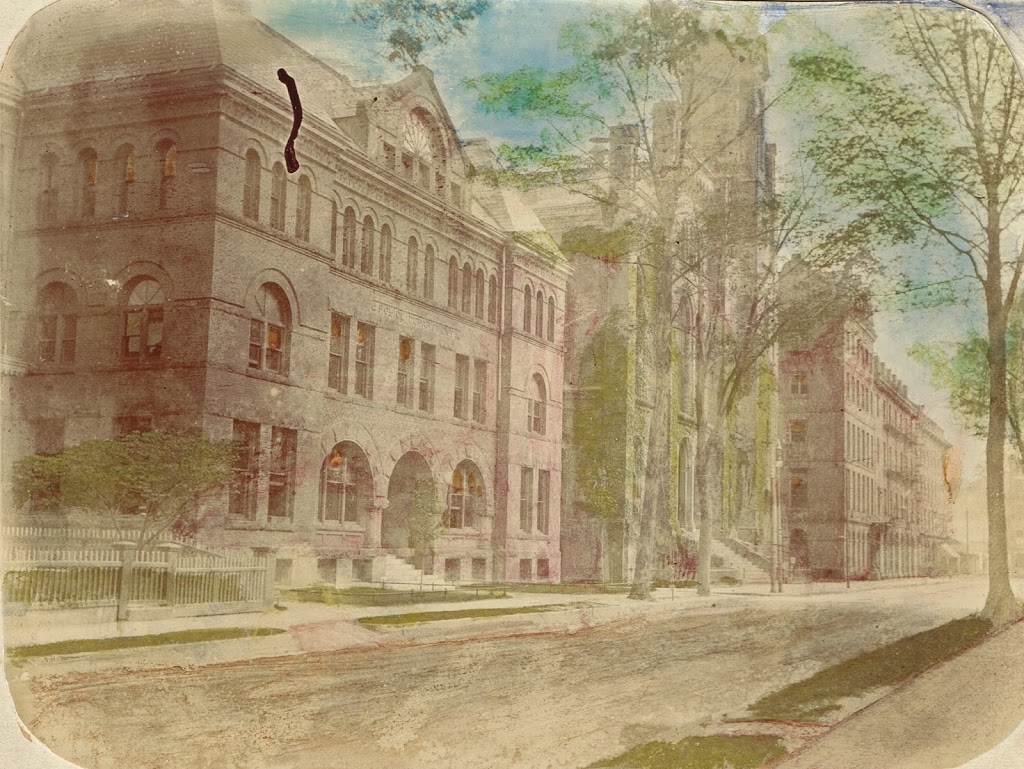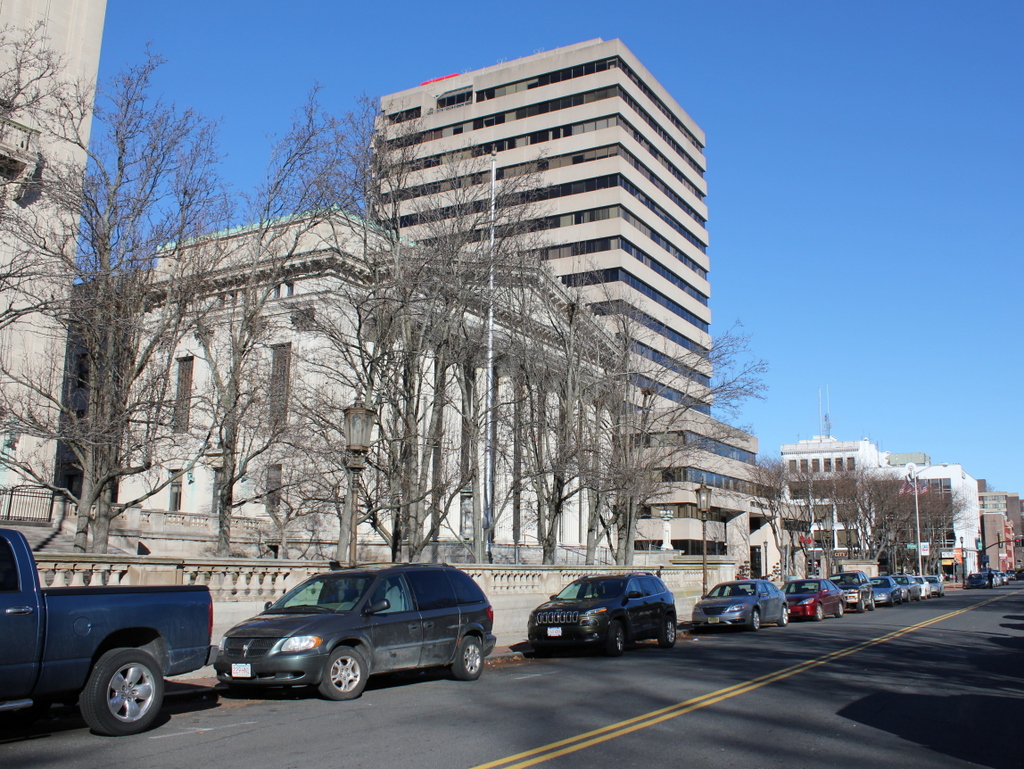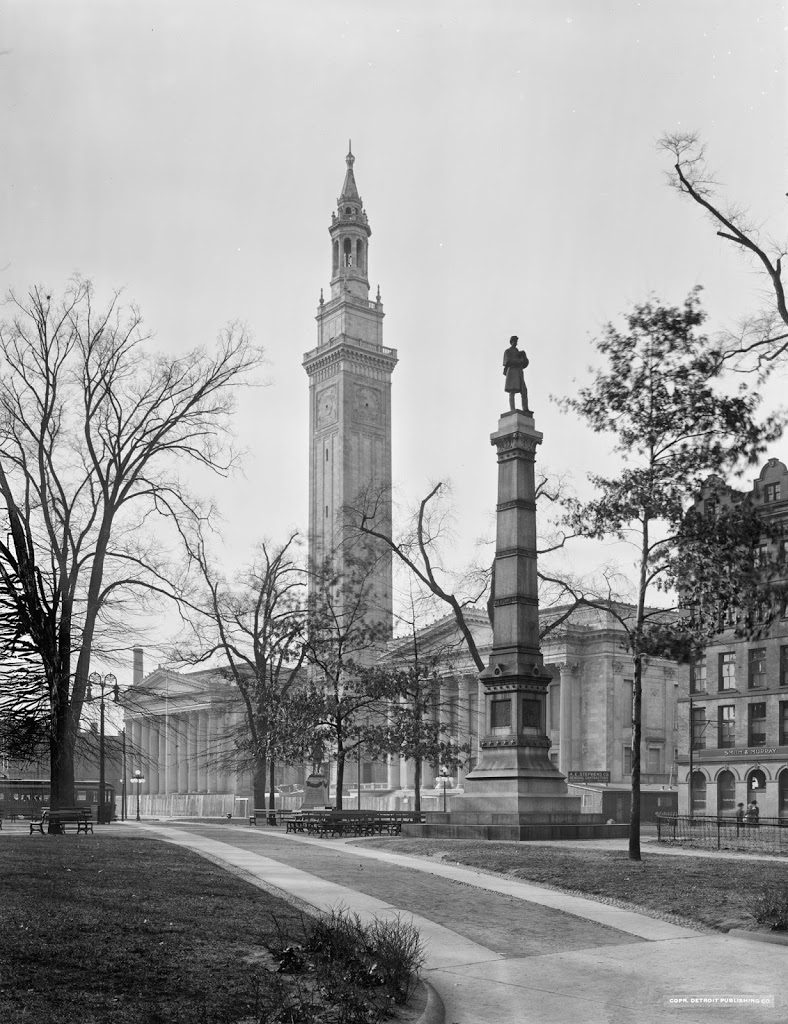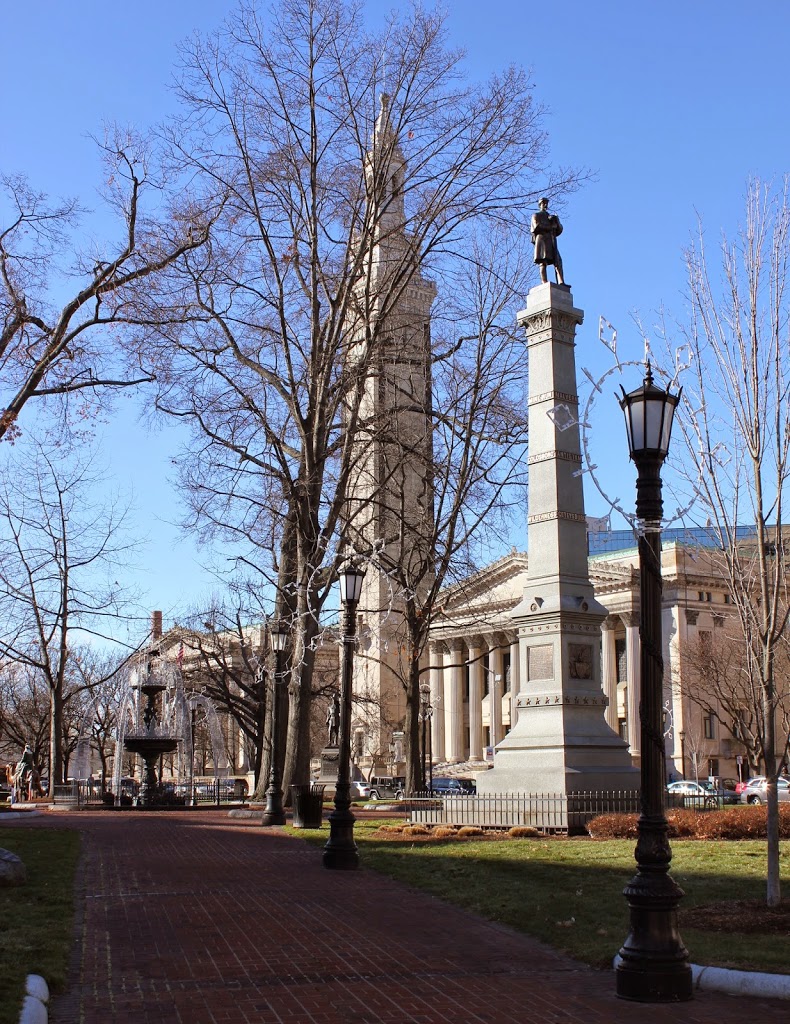The Mt. Washington Cog Railway, near the summit, probably in the early 1870s. Photo courtesy of New York Public Library.
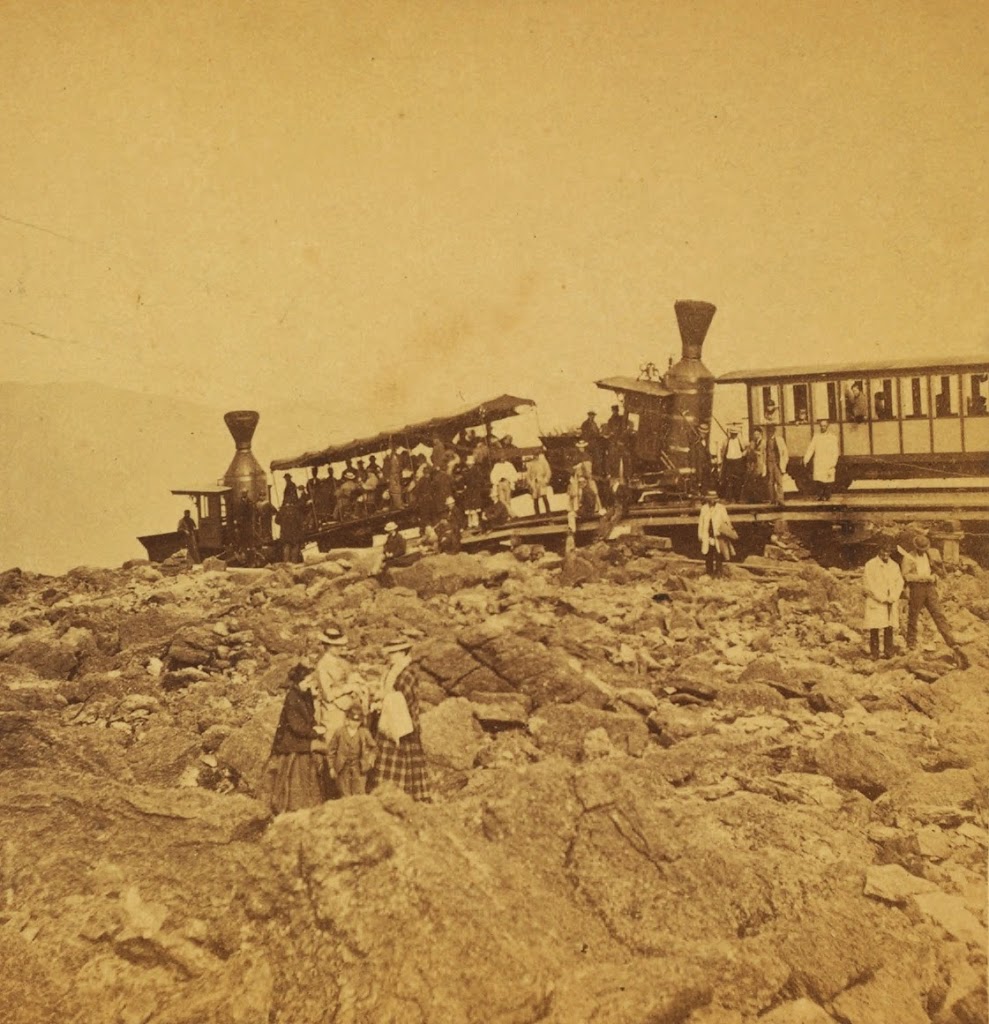
The scene in 2013:
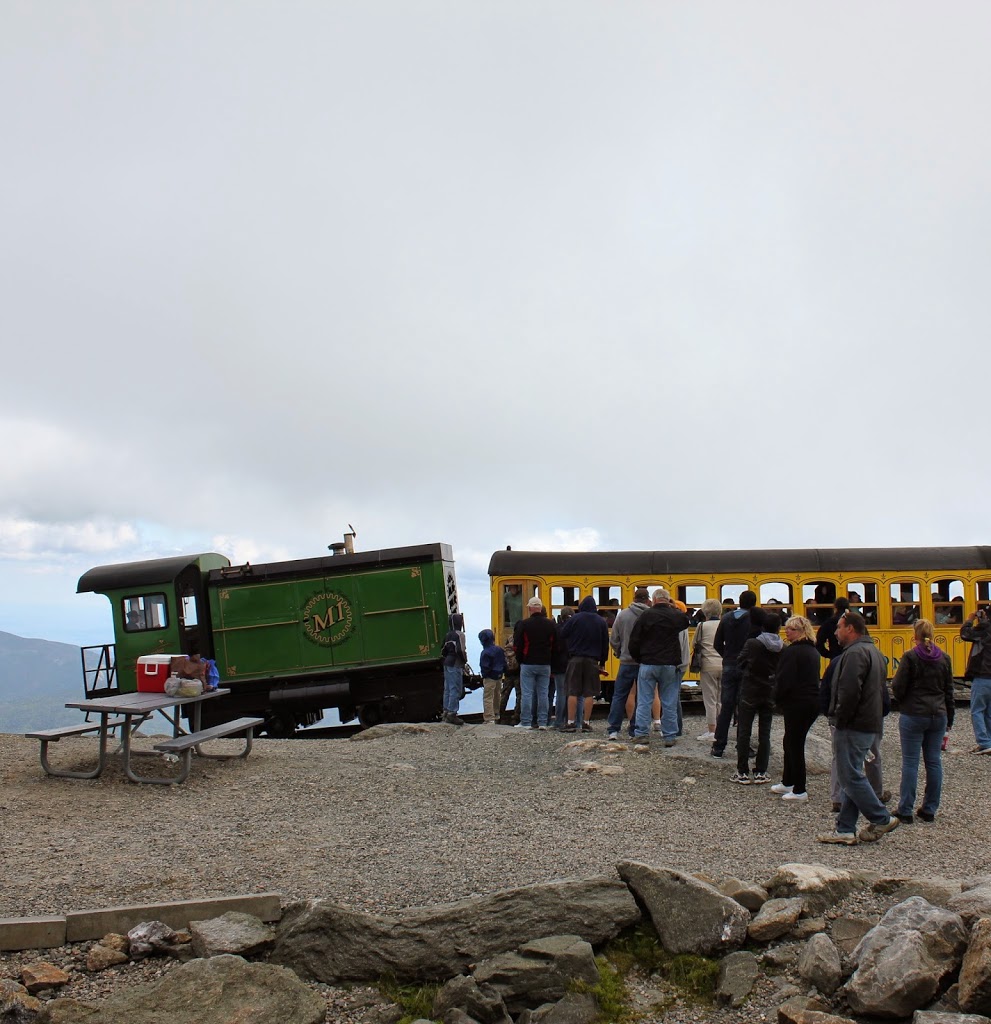
The first photo was probably taken within a few years of the opening of the Mt. Washington Cog Railway. By the mid 19th century, the White Mountains had become a popular summer destination, and Mount Washington in particular became a favorite destination. The only problem was getting to the top; this was first solved by the Mount Washington Carriage Road (today the Auto Road), but even before the road opened, another man had an even more ambitious idea – to build a railroad to the top.
Railroads were still in their infancy in America in 1852, and many major cities still did not have rail connections, but Sylvester Marsh had a plan to build a cog railway to the top, something that had never been done up the side of a mountain before. The New Hampshire legislature gave him a charter in 1858, with one legislator reportedly remarking that they should give him a charter to make a railway to the moon, indicating how impossible it seemed to build a railroad to the top of the tallest peak in the Northeast.
The railroad was completed to the summit in July 1869, only a couple months after the completion of the Transcontinental Railroad. It is about 3 miles long, with an average grade of about 25%, and it set the stage for future mountain-climbing railroads such as the one up Pikes Peak. The locomotives in the first photo indicate that it is an early photo of the railroad; they appear to be the George Stephenson and the Hercules, which entered service in 1869 and were replaced in 1878 and 1874, respectively.
The present-day scene here is remarkably similar; the trains are still operating (most of the locomotives are modern biodiesel ones, but several date back to the 1870s), and there seems to be as many people riding in the 2013 photo as there were nearly 150 years earlier, although clothing styles have changed a bit. It’s not visible from here, but the road to the top is also still there, although it is no longer the Carriage Road but the Auto Road. There are a lot more buildings at the top than there were in the 1870s, although the Tip Top House is still there; it is older than either the Auto Road or the railroad.

